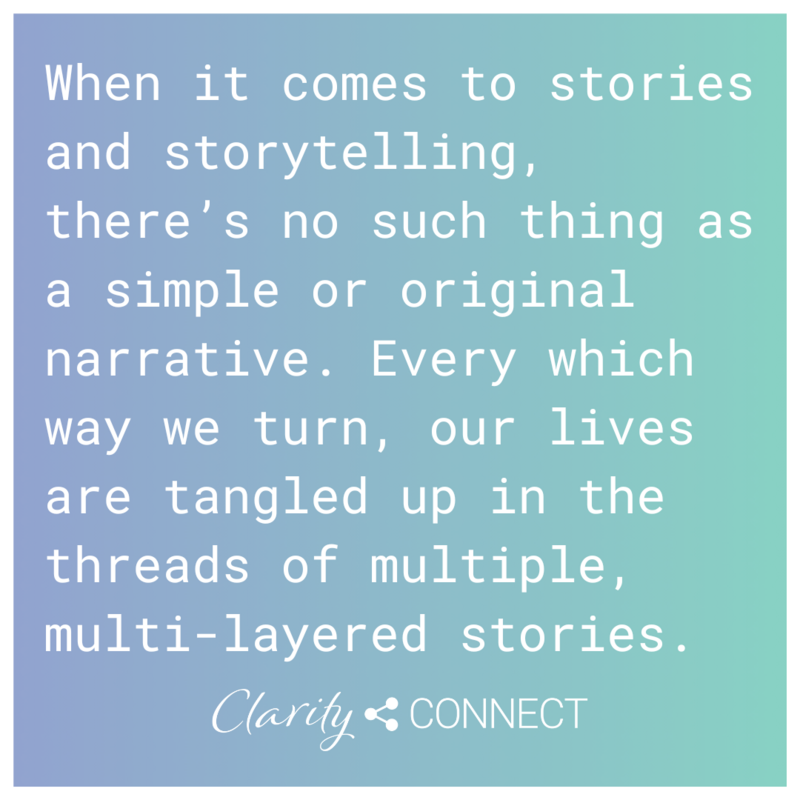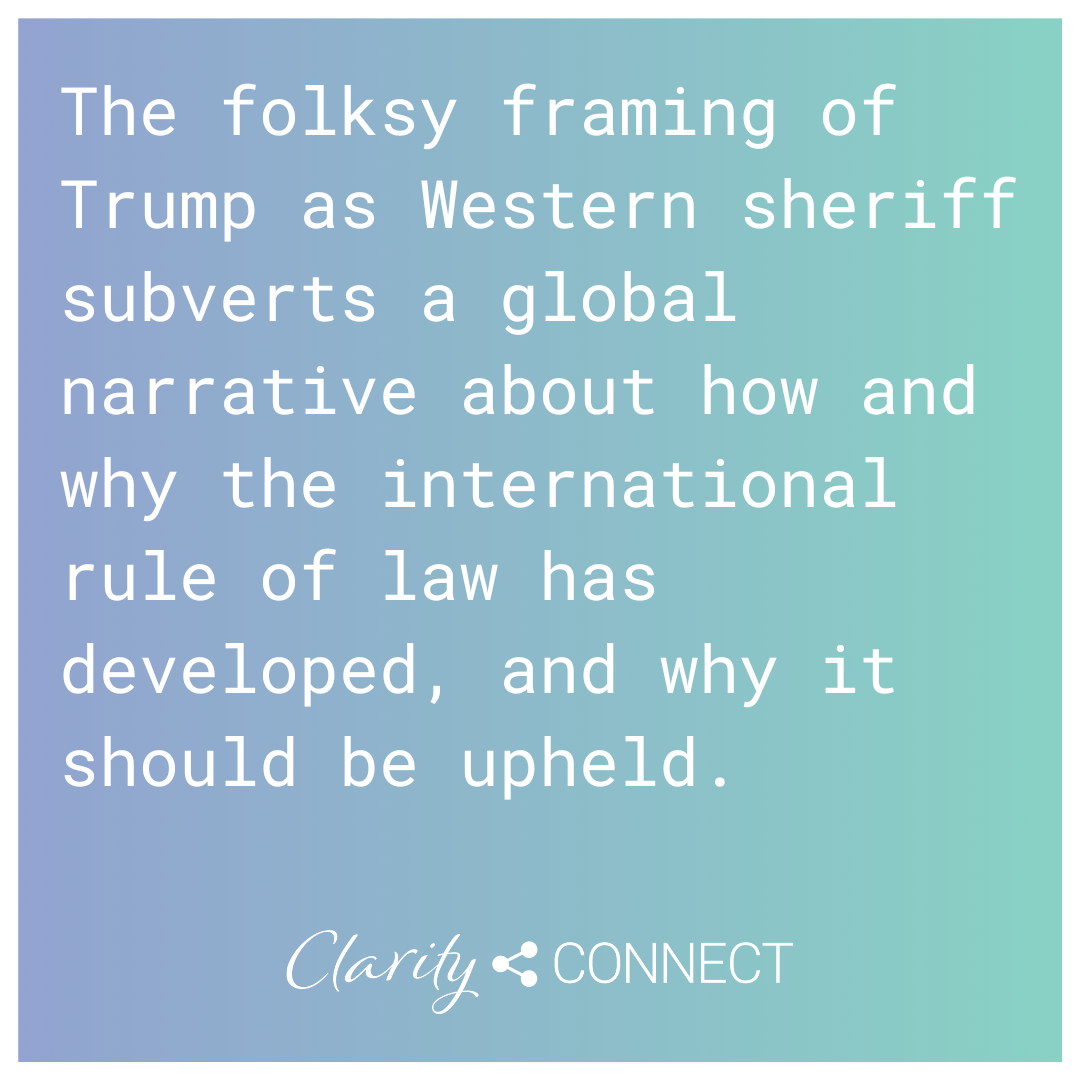
Join us for a free workshop on Strategic Storytelling for Knowledge Mobilization on March 19. Register here.
One of the things you learn when you spend more than a decade studying the ins and outs of classic literature is that each story we encounter is embedded in a tapestry of other stories. No story ever exists as a single, isolated thread.
Shakespeare is the classic example of a storyteller who shamelessly borrowed and stole from other mythmakers, dramatists, historians, and poets. But all playwrights, novelists, screenwriters, speechwriters, and copywriters do the same.
And there’s nothing shameful about this creative burglary. Story is so deeply woven into our cultures and our human DNA that we can’t avoid pulling on the threads of other narratives as we craft our own.
Personally, I find it helpful to recognize how a fabric of interconnected stories envelops us. Rather than relying on the limited powers of my imagination, I can tap into the collective narrative consciousness. Instead of inventing from scratch, I can find a starting point in a narrative that already exists, pick up the stitch, and go from there.
This approach can be a time-saver when you’re tasked with turning a heap of research “facts,” including data, into a compelling narrative. Once you open your eyes to the different layers of story around you, you can tug on familiar threads and quickly craft your own version of an older narrative. Or you can intentionally push against the familiar, challenging or subverting the old story with the new.
Three Different Layers of Story
The complex tapestry in which we humans live and make meaning comprises at least three layers, what I call the Overstory, the Documentary Story, and the Understory:
- The Overstory is a cultural legend or myth, a long-lived story with larger-than-life characters that explains or justifies cultural beliefs.
- The Documentary Story is a fact-based plot that describes an event or situation that is unfolding or has taken place in the past.
- The Understory is a story that’s not told overtly but gestures toward a hidden meaning, usually controversial.
Much research translation and technical communication pays attention only to the middle tissue, the Documentary Story, but the most powerful narratives weave together all three elements.
Since some of the most influential stories come from the realm of propaganda, let me explain by examining an insidious story cunningly crafted to exploit the three layers: JD Vance’s speech at the Munich Security Conference on February 14, 2025.
The US Vice President’s debut on the international stage was brash, to say the least. Both CNN and The Guardian called the speech “blistering,” and the BBC dubbed it a “blast on Europe.” Vance scolded his European allies for repressing free speech, opening the “floodgates” of immigration, and generally letting the current world order slide toward chaos.
“There’s a new sheriff in town,” he declared, and with that short sentence, he invoked a triple threat. With just a few words, he deftly wove together all three story layers to convey the idea that President Trump now rules the world, and his law is the new world order.
Let’s unpack the story-within-the story-within-the-story:
- The Overstory layer refers to a cherished, enduring American story type, the Western. Even if you’ve never read a novel by Louis L’Amour or watched a John Wayne movie, you know the basic plot. It’s been around since the late nineteenth-century (check out The Virginian if you want to trace the Western back to its roots), and it’s been successfully used to justify capitalist greed and American expansion.
Essentially a version of the romance novel for the bros, the Western pits White Man against the wilderness and the Red Man. Commonly, it also pits male aggression and the spirit of conquest against the restraining, “civilizing” ethos of women.
The sheriff often plays a key role in the story because he supposedly brings law to the lawless land. His badge invests him with great authority, including authority to legalize violence against Indigenous Peoples and to create laws of expediency. Functioning on the frontier between civilization and wilderness, the sheriff doesn’t just apply the law—he is the law.
By invoking the Western, Vance instantly called to mind one of America’s most popular, emotionally resonant legends and framed his Documentary Story within it.
- The Documentary Story layer refers to Trump’s swift, decisive actions since coming to power less than a month before Vance’s speech. Like a “new sheriff” sweeping into a frontier town, Trump swept into Washington and immediately started laying down the law, issuing dozens of executive orders. These, you might weigh, are the “facts” of the situation.
- The Understory layer refers to a narrative with an even broader, more historic arc than the story of the Western. By calling Trump “the new sheriff in town,” Vance implied that Trump’s authority extended beyond the borders of the US. Just as the sheriff tamed the land beyond the frontier, Trump sees himself as controlling lands beyond North America.
The folksy framing of Trump as Western sheriff subverts a global narrative about how and why the international rule of law has developed, and why it should be upheld. By calling up the legend of the sheriff, Vance called into question age-old notions of statehood and international diplomacy.
Supplanting Insidious Stories
By no means do I wish to endorse Vance’s devious interweaving of the three layers of story. But his craftiness shows the power of conscious story-crafting. As you translate complex ideas and data into narratives, you can refer to your own Overstory, Documentary Story, and Understory to deliver a triple punch.
The three-layer approach can be especially effective when you want to overturn an entrenched narrative that tells an insidious story. Just as Vance used the familiar story of the Western to subvert the idea of the international rule of law, you can create an Understory to challenge misinformation, harmful beliefs, or apathy.
For example, let’s say you work for a research institute with a mandate to analyze the housing crisis and advocate for evidence-based solutions to it. Here are some thoughts about how you might interweave the three layers of story to capture your audience’s attention and persuade them to join your cause:
- At the Overstory level, you might identify a positive, universal myth that speaks to what happens when a community ignores, or takes care of, its most vulnerable. A lot of advocacy for people experiencing homelessness focuses on individual stories. Certainly, that approach humanizes the issues. But what might you gain by seeking a more encompassing narrative, one that operates on the community or cultural level?
- At the Documentary Story level, you might consider how to present the “facts” of the housing crisis as an intriguing plot, with the community—rather than the individual—at the center.
Yes, it’s important and valuable to document stories of individuals in crisis, and it’s also easy to dismiss individual cases. How might you take your storytelling to the community level? How did we get into this situation as a society? Who or what is the real source of the problem? What are we fighting against and fighting for? What’s the promise of a happy ending look like?
- At the Understory level, you might zero in on a foundational narrative, a narrative that’s widely taken for granted, that must be upended for change to happen. Perhaps that’s the myth of American-style individualism or the myth of the trickle-down benefits of capitalism. Identifying the Understory you want to supplant is the key to telling a tale with a revolutionary agenda.

When it comes to stories and storytelling, there’s no such thing as a simple or original narrative. Every which way we turn, our lives are tangled up in the threads of multiple, multi-layered stories.
Acknowledging that reality is the first step toward engaging your audience in the collaborative work of dismantling insidious stories and reconstructing them as narratives that drive change.




Comments